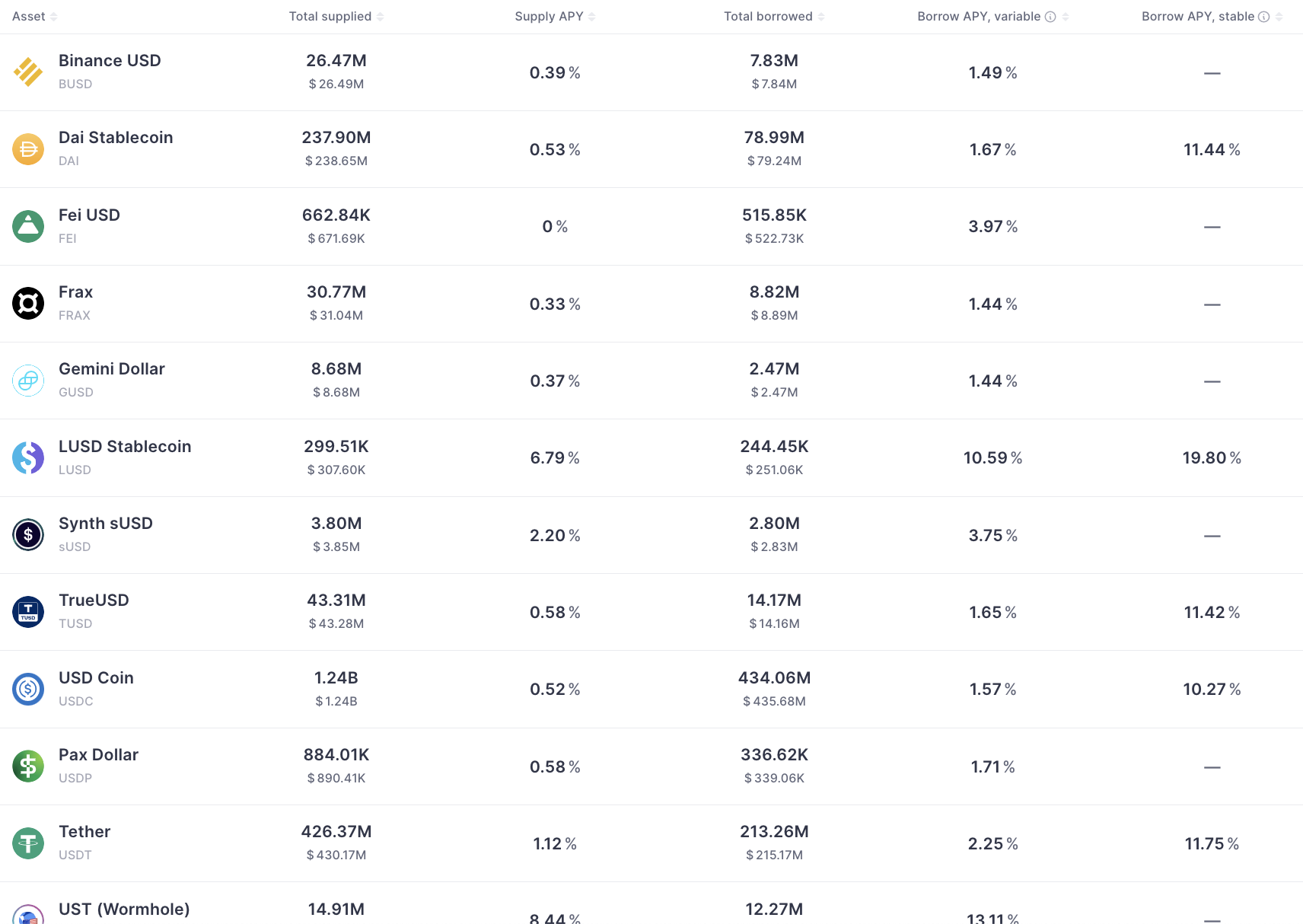MakerDAO (MKR) is up by about 5% over the past 24 hours, more than bitcoin, eth, or indeed stocks, all of which are up by about 1%.
Raising the question of whether defi is thinking of coming back to life after a bear of close to two years, with MKR crossing $6,000 in May 2021.
Now it trades at $792, up from $730 yesterday, and up from a low of $580 on the 21st of September.
That’s amidst numerous developments for Maker, starting with an offer by Gemini to give them a 1.5% yield to include GUSD.
Coinbase has also offered a 1.5% yield on 33% of the USDc in Maker, about $1.6 billion. That’s about $24 million a year in interest.
That may go to Maker token holders, potentially explaining this recent rise in price, while DAI’s market cap remains somewhat stable at $7 billion.
Defi as a whole now has just $27.5 billion in assets, down from $100 billion in November, though the amount in eth seems to be somewhat stable.
Quite a few stats indicate that the peak for defi was in April 2021, unlike November for eth and bitcoin, with April also being when NFTs took off, taking defi’s limelight.
The reduction in defi interest has been partially attributed to a significant rise in network fees, pricing out potential users.
Those fees are now down to about $1 per transaction, with defi currently potentially having some arbitrage opportunities.
It currently costs about 1.5% to borrow DAI, bUSD, USDc or gUSD on Aave, for example. With Fed’s base interest rate at above 3%, that seems to be quite cheap.

You need collateral here to borrow, but that collateral can be dollars themselves, tokenized. Eliminating any volatility.
Thus if you have $100,000, you can borrow $50,000 at the cost of 1.5%. If the bank gives you 2% interest in savings, or if you can access those inflation linked bonds, then you’re getting anywhere from 0.5% to 6.5% for ‘free.’
In parentheses because obviously there is no such thing as without risk. You have to lock the tokenized dollars, and that means managing keys, and these defi interest rates are variable, so if demand spikes while supply doesn’t and you lack liquidity to close the gap, a winning bet might turn into a losing one.
Still, as interest rates have risen so fast, it is most probably the case that the market just hasn’t gotten around to arbitraging close to risk free opportunities in defi offers.
It used to be the case of course that defi provided huge yield for those lending the assets, even 20% or more, but the crypto bear may have sent that demand to the other extreme, making borrowing now potentially lucrative.
Another aspect for the defi bear may well be that a lot of it was incentivized by new tokens, airdropped or given as reward for liquidity, for lending.
A lot of them had initial speculative value above utility, and a lot of those rewards are now quite a lot lower.
They worked, and excellently, for bootstrapping, but now at the second or third year, and for Maker it’s nearing their fifth year, the token itself arguably can’t quite be a source of growth.
Utility can be of course, and arbitrage with analogue finance can be such utility, but the deleveraging of that token aspect may well take the bear some floor time to bull.
Deleveraging in as far as arguably the initial token distribution for ‘yield farming’ models created artificial initial demand, which has to be replaced with actual demand.
Going from $6000 for Maker to $600 is quite something however. That’s back to December 2020, before the first bull run, and it’s below what it first reached even in 2018.
If we remove brief volatilities in between, this token has kind of seen no growth despite huge growth in DAI.
That indicates a lack of incentive alignment, primarily probably a failure to distribute protocol fees to token holders.
There are potential regulatory problems with that in bank controlled US ‘regulators,’ but go bold or go home.
Bold being to just ignore them since you’ll only get a fine and even that can be delayed for years in court hearings and appeals of appeals until no one cares anymore, and home being to comply by registering which is just a filing with the former bankster.
That’s the choice these projects may be facing because in limbo like this, it can be argued it is the worst of both worlds.
Indeed, if one doesn’t want to mince their words, it can be argued that MKR is a failure since it has seen as good as no gains in five years. The token, the dapp is a huge success.
One can ask of course whether it matters that the token is a failure, but these and other aspects are what’s to be addressed during the bear if there’s going to be better resilience during the bull.
Or indeed if there’s going to be another bull at all in defi, which is not owed to anyone, and in the absence of some history for defi, no one can quite say with data whether there will be such a bull.
Except, there’s potential arbitrage here to play and with fees so low once again, people may start finding the time to see what’s been happening in this wreckage of defi.
- Big Image
- Bitcoin
- blockchain
- blockchain compliance
- blockchain conference
- coinbase
- coingenius
- Consensus
- crypto conference
- crypto mining
- cryptocurrency
- decentralized
- DeFi
- Digital Assets
- ethereum
- machine learning
- news
- non fungible token
- plato
- plato ai
- Plato Data Intelligence
- Platoblockchain
- PlatoData
- platogaming
- Polygon
- proof of stake
- Trustnodes
- W3
- zephyrnet













